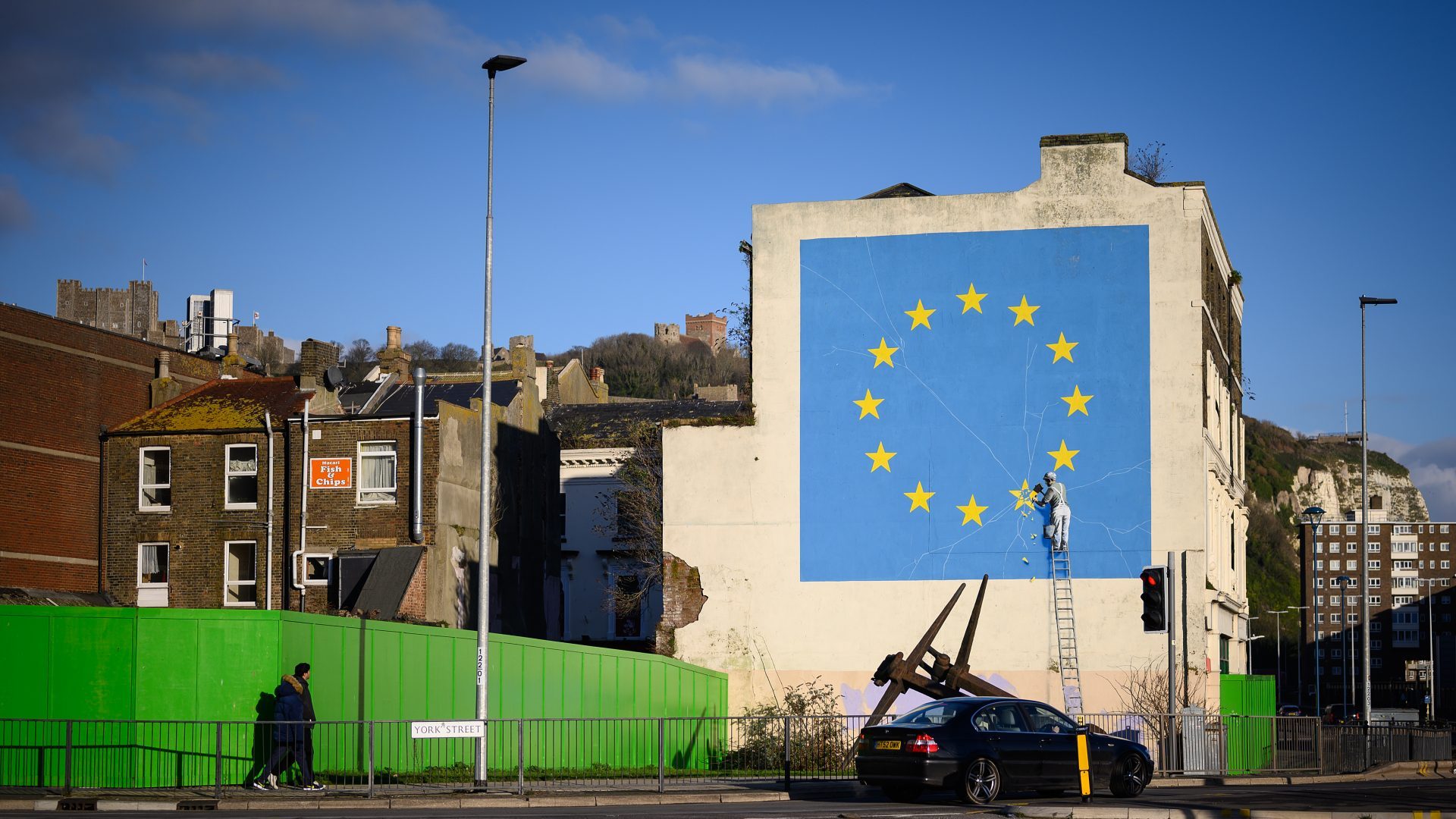How on earth did it happen? Last week, the most significant piece of art to reference ar of the most significant moment in a generation, created by the most significant British artist of the time, was destroyed.
Banksy’s giant image on the side of a building in Dover, which depicted a workman chipping away at one of the stars on a European Union (EU) flag, is no more. The artwork has been demolished to make way for what the Dover District Council (DDC) describes as a new “creative centre”. A baffling move, since you’d imagine that high on the list of what might attract young creatives to Dover would be a giant mural by Banksy.
But it was not so popular with locals in Dover, who voted 62% Leave in the 2016 referendum. Vandalised several times after it was painted in 2017, the Banksy was whitewashed over two years later. The DDC says that the cost of restoring it, removing it and rebuilding it brick-by-brick might have been as much as £5miliion, while the painting has been valued at £1.4 million. And so the demolition firm moved in.
This is a story of Britain being unable or unwilling to recognise and preserve bits of modern cultural heritage – see also, among several others, the Brutalist tower in Redcar blown up after culture secretary Nadine Dorries overturned its Grade II listing on her first morning in office and the destructions of the original Cavern Club in Liverpool and Manchester’s Hacienda nightclub.
But it is also a story of how Britain deals with Brexit now. Unable to name the elephant in the room – in order to spare their own blushes or those of others they do not want to alienate – politicians and pundits pretend that it is “done” and cannot be undone or even talked about – despite the obvious damage it is doing to every sector of our economy and to our institutions.
Dover District Council’s solution to the mural problem – they have signed the rights to the bricks and mortar away to the demolition firm with no agreed plan on how it should be rebuilt – will sound familiar to those of us who have watched Brexit’s fiercest advocates – Boris Johnson, Michael Gove, David Davis, Liam Fox, Jacob Rees-Mogg, Rishi Sunak – take charge of the project and achieve no visible success.
Like the Dover mural, the British economy now lies in pieces, waiting for something that may never come.
It sounds like the subject of an earlier Banksy – a maid sweeping unpleasant things under the carpet.










